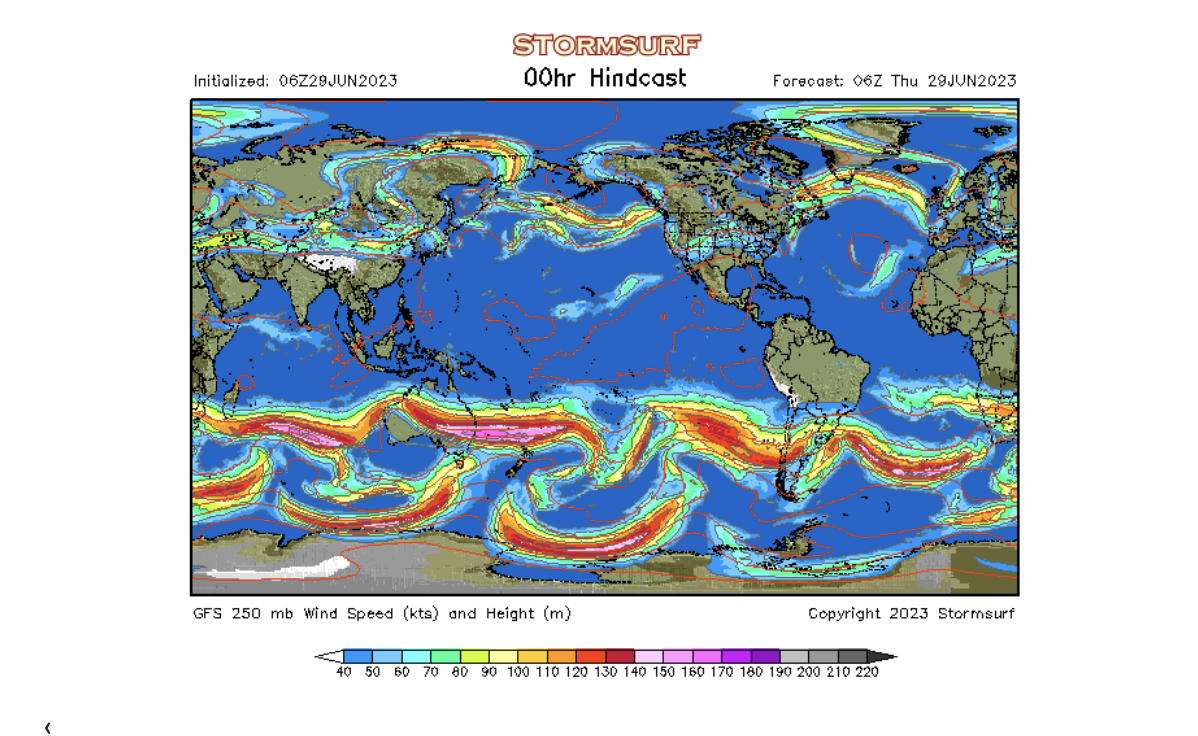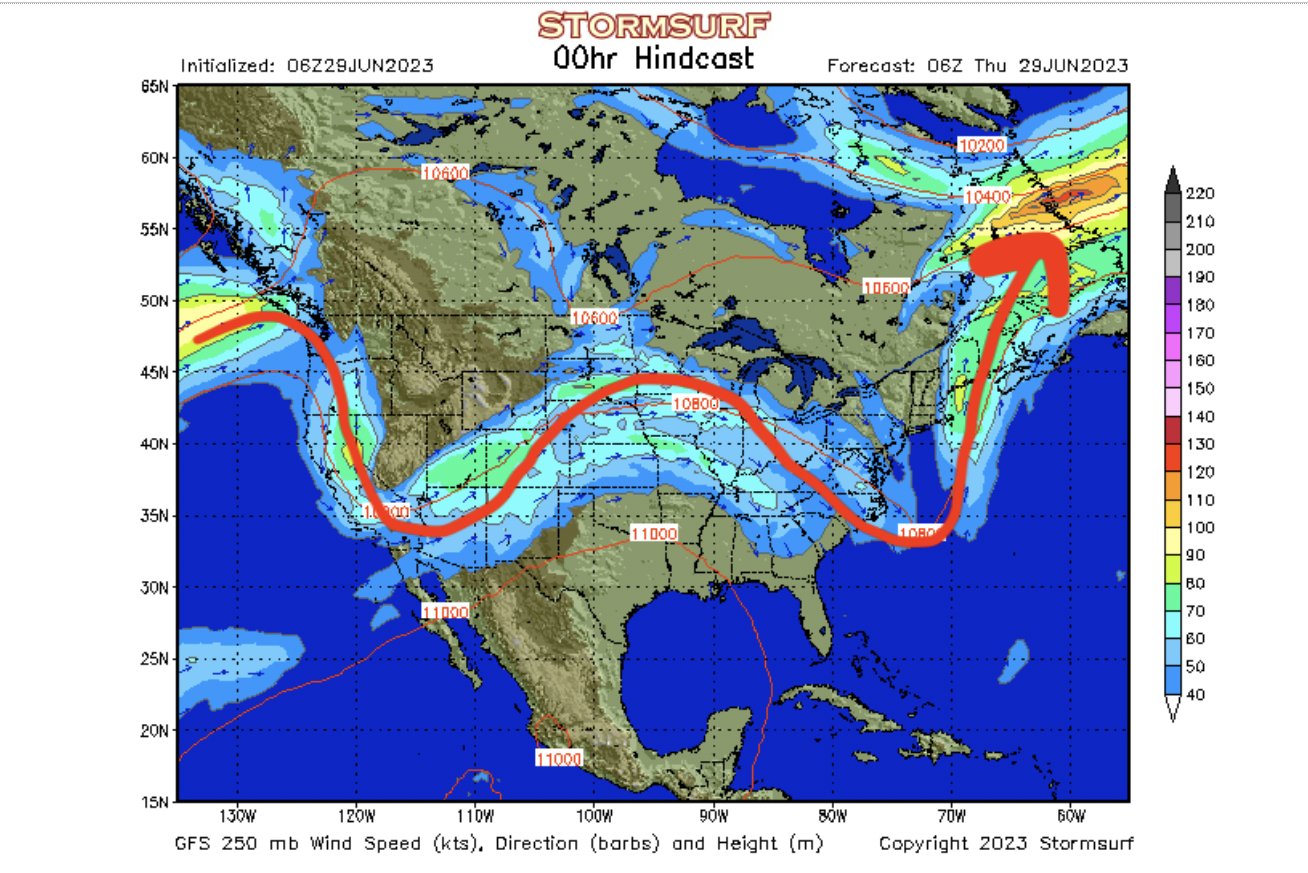PennFuture Blog
Our Perspectives on the Latest Issues
Pennsylvania’s weather in 2023 has been strange at best and deadly at worst. Extreme drought in May gave way to historically dangerous air quality in June, with a dash of severe storms and tornadoes for good measure. Forecasters point to wind patterns to describe why the weather has been so extreme. But a deeper dive into what’s causing these unusual events points to something more insidious: humans are breaking the Earth’s jet streams.
Let’s back up and start with the basics before this becomes a sequel to Day After Tomorrow.
What is a jet stream?
Jet streams are like twelve-lane highways in the atmosphere. Fast-moving jets of air that circle the globe and are usually found at the height that commercial airlines fly. Jet streams exist because of temperature differences. The sun warms the Earth unevenly because our planet has an orbit and its axis is tilted, so regions around the equator get more solar warmth than regions around the poles. The temperature difference between the colder north and south poles with the equator causes the wind to blow in fast currents.
These jet streams play a huge role in our daily lives. For example, Pennsylvania has faced numerous energy crises because of the polar vortex, where the northern polar jet dips down really far south, bringing with it arctic cold air.

This image above shows the jet streams on June 29, 2023. Notice the faster moving lines closer to the very top and bottom of the map. Also note that in the northern hemisphere, there is the so-called subtropical jet cutting across the United States and through the northern Atlantic and Pacific Oceans.
For months, forecasters talked about how the United States weather has been driven by what is called an Omega Block, a pesky phenomenon where the jet stream stops moving predominantly west to east across the country and instead moves in big, blocky waves.

The second map zooms in on the United States during the same time period and highlights this wavy, omega-like jet stream pattern, which existed for all of May and into July. This blockiness locked in profound weather changes, including extreme heat in Texas, numerous tornado outbreaks across the plain states and deep south, as well as providing a pathway for wildfire smoke to travel from Canada to our airspace in Pennsylvania.
Changing Patterns
Omega Blocks are not uncommon, but what is unusual is how stuck and blocky the whole global jet stream pattern has become. Dr. Michael Mann, an esteemed climate scientist in Pennsylvania, noted that he’s “...honestly at a loss to even characterize the current large-scale planetary wave pattern. Frankly it looks like a Van Gogh.”
Look more closely at the first map of global jet streams, and you may pick up what Dr. Mann sees—the subtropical jet in the northern hemisphere has become fragmented, discontinuous, and very slow compared to the jet streams elsewhere on the planet. For example, the jet stream lines over the US, India, China, and Northern Africa are colored light green (slower speed), and it’s difficult to connect a continuous line across the globe. It’s subtle but important.
Why does this matter, and what’s causing it?
Climate change research gives us a good clue about what is going on. Man-made global warming is rapidly heating the planet and much of that heat is being recorded as big temperature spikes at the poles. For instance, the North Atlantic is in the midst of a never before seen increase in ocean temperatures of 5 to 10 degrees Fahrenheit. Arctic Sea ice has plummeted so much recently that scientists expect it to be ice-free in the summer by the end of this decade. And global average temperatures in June are currently running close to a degree warmer than any month in recorded history.
Rapid warming in the Arctic fundamentally changes the temperature difference between the poles and the equator. Without a steep temperature difference, wind currents slow. In other words, global warming—and thus human activity—slows, and even breaks the global jet streams. As the jet stream slows, the blocky wave patterns like the Omega Block, get bigger and tend to get stuck.
Sound familiar to what we’ve been experiencing for over two months in Pennsylvania?
In the short-term, extreme weather is only going to get worse. Natural cycles in global climate patterns are also changing. They will enhance the human-induced changes we just discussed, including a rapid warming of the east Pacific Ocean called an El Nino pattern that also causes significant changes to the jet stream and US weather patterns.
Humans burning fossil fuels and warming the planet are having far-reaching impacts, going so far as to now change the fundamental dynamics of the planet's jet streams and adding to the long and growing list of extreme weather harming the Commonwealth. The question has long been: can and should we do anything about global warming in Pennsylvania? Yet, as we more deeply change the climate, the question shifts to how fast can we do everything to stop this madness?
BLOG SEARCH
LATEST BLOG POSTS
Get the Latest onOur PennFuture
Sign up for email updates on the latest news, events, and opportunities to make a difference.